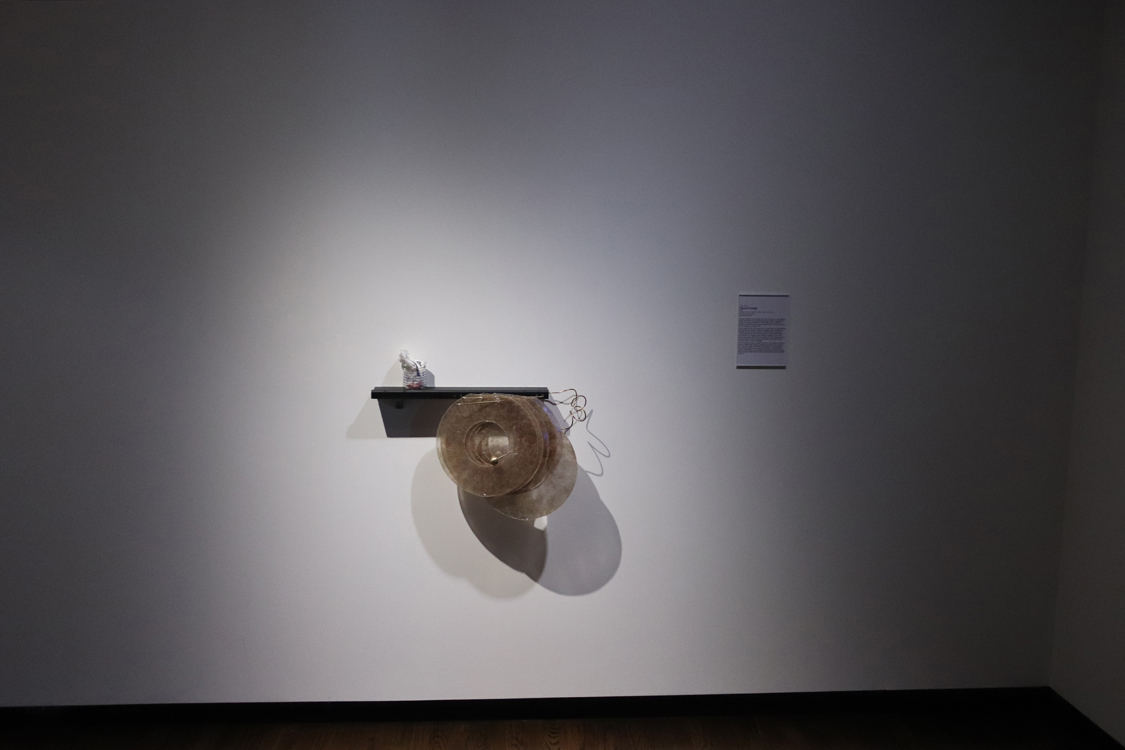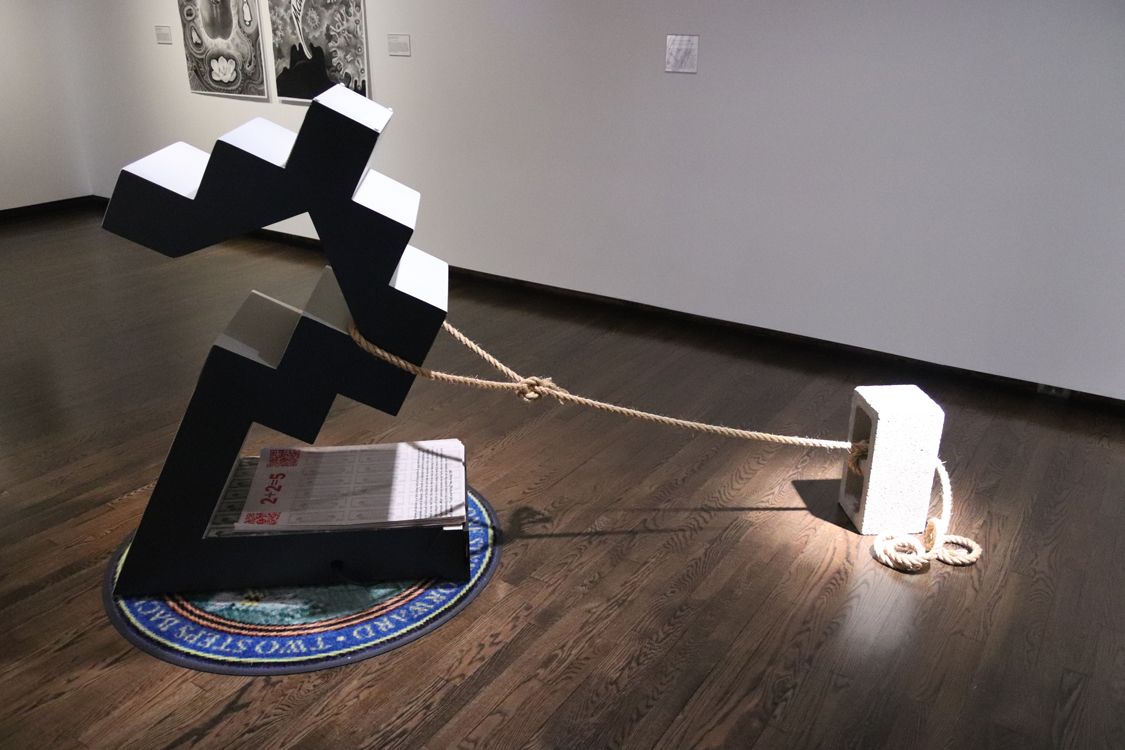





William Deering

Behind The Wall
2019
Photographic Chromogenic Prints
Courtesy the artist
These serene images present details of headstones in the Père Lachaise and Montparnasse cemeteries in Paris. Photographer William Deering discovered the details, which he considers to be found images, in the cemeteries while seeking solace behind their walls in periods after the deaths of his father, mother, and several friends. In earthy shades of green, grey, brown, and blue, delicate materials like dirt, moss, and flowers appear to hover in the images as if suspended in an eternal stillness. The images invite contemplation on the history of their sites: centuries-old cemeteries, the ageless ground in which the bodies lay as the world above turns above them, unaware. For Deering, the cemeteries are “not just a burial ground for departing souls, they’re a resting place for the living.” Made prior to the 2020 COVID-19 outbreak, the images may take on new meanings in this context with a heightened public awareness of mortality.
Jon Cox

left to right
Jon Cox and Andrew Bale
Jorge
2015
Metallic print
Courtesy the artists
From: The Ese’Eja People of the Amazon: Connected by a Thread
Jon Cox and Andrew Bale
Claire
2019
Metallic print
Courtesy the artists
From: ARRIVALS: What’s Left Behind, What Lies Ahead
Jon Cox, Briana Henry and Sierra Watkins
Amber
2018
Metallic print
Courtesy the artists
From: Women of Consequence
Jon Cox
Alyssa
2020
Metallic print
Courtesy the artist
From: Cultural and Environmental Restoration: Lenape Tribe of Delaware
Jon Cox
Endecko
2020
Metallic print
Courtesy the artist
From: Hadza: The Roots of Equality
Robyn Phillips-Pendleton

left to right
Bodies and Souls, no. 2
2020
Charcoal on Stonehenge paper
In Bodies and Souls, no. 2, as in Bodies and Souls, no. 1 (nearby), Phillips-Pendleton creates a swirling composition of interweaving figurative and abstract elements that evokes a dreamlike state. Potent symbols hide within and emerge from a holistic field that functions like a collective (un)consciousness. The artist’s interests in the historical transmission of images and the functions of images and symbols in constructing individual and cultural identities inform her compositional approach. What results is a layered investigation of Black identity, slavery, the south, and the myths and truths of American history and society.
Bodies and Souls, no. 1
2020
Charcoal on Stonehenge paper
Bodies and Souls, no. 1 and Bodies and Souls, no. 2 (nearby) present visual meditations on race and violence against Black bodies in historical and contemporary contexts. Although the two drawings do not depend on one another compositionally and can be separated, Robyn Phillips-Pendleton conceived and created them together. The subject matters address the history of lynching alongside contemporary assaults on the Black body by police and by the COVID-19 virus, which has disproportionately ravaged Black and Brown communities due to inequalities resulting from systemic racism.
Robyn Phillips-Pendleton website
The 181

Nautical Twilight
2020
A map-thing, an anchor-thing, and a buoy-thing
Dimensions variable
Courtesy the artists
Nautical Twilight: the time when the center of the sun is twelve degrees below the horizon and only general or vague outlines of objects are visible. During the evening this is when it becomes too difficult to perceive the horizon, and in the morning this is the moment when the horizon becomes distinguishable.
Artist collective The 181 invites others to join them in contemplating the definition of Nautical Twilight provided by the U.S. National Weather Service. At various times throughout the exhibition, as coordinated by The 181, six-foot diameter circles located within and outside of the gallery space will be occupied by an invited guest. Each guest will bring a “map-thing,” an “anchor-thing,” and a “buoy-thing” of their choosing to facilitate their public-facing interpretations of nautical twilight.
The 181 is Brandon Boan, Abigail Donovan, Tom Hughes, and Jason Rhodes. Deliberately working outside of commercial art contexts, the collective stages “situational compositions,” or participatory events involving humans, materials, and objects. Their interests include examinations of information transmissions and processing, often through collaborations that foster what they call an “aesthetic of trust.”
Activations of “Nautical Twilight” will occur from time to time throughout the duration of the exhibition.
Aaron Terry




One Step Forward, Two Steps Back
2020 – 21
Wood, speakers, printed fabric speaker covers, cinder block, rope, and sound track (60 min. Compositional loop)
Courtesy the artist
Aaron Terry’s interdisciplinary approach to art brings together his background in music, work as a printmaker, and long-standing interests in political-economic systems and social justice. In this sound-sculpture, Terry reflects on the inequities inherent to capitalism and the socio-political system in the United States. The work’s rigid construction, yet seemingly precarious stability, evokes the country’s top-down socio-political and economic structure, as well as the possibilities for uprising or downfall latent within it. Behind the speaker grills, printed dollar bills suggest the costs (both social and monetary) of the current societal structure, while the gold and copper-colored grills visualize the music’s surging sonic energy. Terry’s composition is an audio collage—sourced from fragments of commercial music, travel recordings, social media, and YouTube—referencing a multitude of perspectives, possibilities, and shortcomings in our society. The sculpture stands on a circular carpet emblazoned with the seal of the U.S. government.

